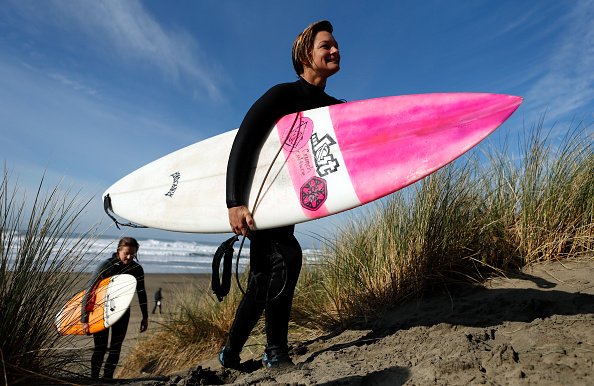Here at Seismic Sisters, we love to support women-owned businesses. Each of these women-owned businesses offers not only lovely products but also meaningful stories and values that make their goods extra special. Shop these local gems to give gifts that are beautiful, thoughtful, and perfect for the holidays!
Curated by Tumay Aslay.
Cover image courtesy of Taylor Jay
Taylor Jay
Taylor Jay is an Oakland-based, woman-owned fashion brand that celebrates comfort, inclusivity, and sustainability. Founded by Taylor Jay in 2014, the brand focuses on designing chic and versatile pieces that empower women of all shapes and sizes. Perfect for the holidays, Taylor Jay’s cozy yet stylish pieces make thoughtful and sustainable gifts for the fashion-forward women in your life.
The Latch Key
Whitney Sharpe, founder of The Latch Key, crafts stunning ceramics inspired by meditation and mindfulness. Her handmade pieces—ranging from delicate jewelry to functional home décor—bring a sense of calm and intention to any space. Whitney’s work is deeply personal and artistically inspiring, making her ceramics ideal for gifting this holiday season. Whether you’re shopping for a minimalist or an art lover, The Latch Key offers truly memorable options.
Three Babes Bakeshop
Anna and Lenore, childhood friends and bakers extraordinaire, created Three Babes Bakeshop out of a shared love for food and community. Their dedication to using organic, seasonal ingredients shines in every pie they bake, from traditional apple to indulgent bourbon pecan. What sets them apart is their deep commitment to sustainability and social justice, making their bakery a destination for conscious foodies. With their pies packed in charming, reusable wooden boxes, these sweet creations are a perfect addition to holiday celebrations or as gifts for those who appreciate quality and care.
The Foggy Dog
Founded by Rose Shattuck, The Foggy Dog redefines pet accessories with style and purpose. Each product—whether it’s a chic dog bed or a colorful bandana—is made in the USA using eco-friendly materials. Beyond creating functional, fashionable pet goods, Rose is passionate about giving back, with every purchase supporting animal rescue efforts. Perfect for pet lovers, their beautifully designed items make thoughtful holiday gifts for anyone who loves their furry companion as much as family.
Farmgirl Flowers
Christina Stembel’s Farmgirl Flowers brings a fresh, sustainable approach to floristry. Known for their signature burlap-wrapped bouquets, Farmgirl focuses on using locally sourced blooms to reduce waste and support American farmers. Christina’s innovative model has transformed the flower industry, offering eco-friendly arrangements that are as stunning as they are sustainable. A bouquet from Farmgirl Flowers is a meaningful gift for spreading holiday cheer, with each one embodying thoughtfulness and care for the planet.
Iyoba
When founder Efiya Asabi couldn’t find natural remedies for her son’s eczema, she began creating her own, leading to the birth of Iyoba. Her handmade, plant-based skincare line features luxurious soaps, body butters, and hair care products, all crafted with love and eco-consciousness. Efiya’s mission goes beyond skincare, emphasizing wellness and sustainability in every product. Ideal for gifting, Iyoba’s offerings provide a perfect opportunity to treat loved ones to natural, handcrafted self-care this holiday season.
Rare Device
Rare Device, founded by Rena Tom, is more than a store—it’s a celebration of creativity and community. This beautifully curated shop features unique, artist-made goods ranging from handmade ceramics to quirky greeting cards. Rare Device is the perfect destination for finding one-of-a-kind holiday gifts that support independent artists and add a touch of charm to anyone’s home or life. If you’re looking for something truly special, this is the place to shop.
Alyssa Nicole
Alyssa Nicole, founded by Alyssa and Sonia Casares, is a luxury fashion line that celebrates craftsmanship and feminine elegance. Every piece in their demi-couture collection is meticulously handmade in San Francisco, making it a true work of art. From timeless dresses to ethereal accessories, Alyssa Nicole’s creations are ideal for anyone who appreciates high-quality, slow fashion. This holiday season, gift your loved ones a piece that’s not only beautiful but also tells a story of artistry and dedication.
Aplat
Shujan Bertrand’s Aplat embodies sustainability and thoughtful design. Inspired by the art of origami, Shujan creates zero-waste culinary totes, reusable wraps, and accessories that bring elegance to everyday life. Aplat’s products are perfect for eco-conscious friends or family members who love to cook, entertain, or simply live sustainably. These beautifully crafted goods make practical yet stylish holiday gifts that align with values of waste reduction and mindful living.
Monastery Made
Athena Hewett’s Monastery Made blends her Greek heritage with modern skincare expertise to create a line of botanical, minimalist products. From cleansing oils to hydrating serums, each item is designed to simplify skincare routines while delivering luxurious results. Perfect for anyone seeking radiant, healthy skin, Monastery Made offers holiday gifts that encourage self-care and relaxation. With elegant packaging and artisanal quality, these products are a joy to give—and receive.
Seismic Sisters does not endorse any of the Seismic Sisters Gift Guide products or services nor does it guarantee the quality, merchantability, appropriateness or availability of the products or services listed in the Seismic Sisters Gift Guide (or any other products or services sold on the linked websites).
The links are only provided as a courtesy to allow access to the referenced sites. It is your choice whether or not to purchase such gifts or services. Seismic Sisters will not make any money from the sales of the products and services and does not have any financial relationship with the linked sites.
















































































































































